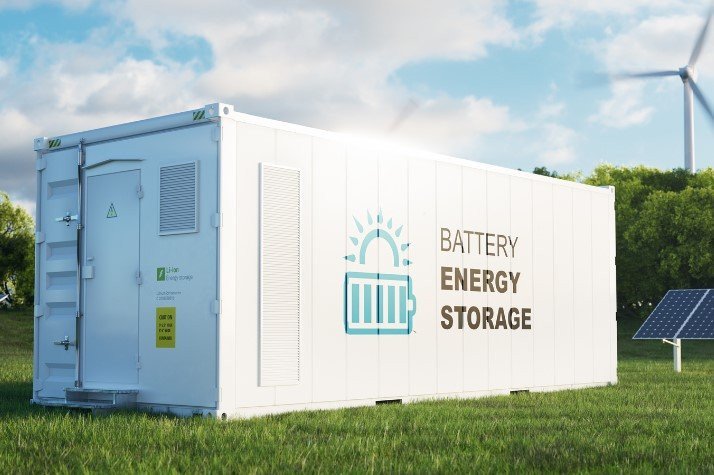Tamil Nadu – clean energy leader in the making
The State of Tamil Nadu has already proven itself as a leader in renewables penetration in India. Taking its ambition of becoming a clean energy leader a notch higher, the State has now started taking measures for attracting EV manufacturers and promoting EV adoption as well.
Tamil Nadu is one of the few States in India with very high potential for renewables. The State is blessed with bountiful renewable resources, high-resource sites and coastal regions which also gives it the benefits of offshore wind. The growth of renewables in the State has been a well-known example in the renewables sector.
TN has been the leader in wind generation and is also fast catching up in the solar capacity race (at present it is the fourth largest State in India in terms of solar installed capacity). In terms of the overall renewable capacity, the State is the top-most in India and 9th in global renewable energy output. The State has also been quite proactive in welcoming new ideas and concepts. In 2019, the State government rolled out its electric vehicle policy and in a welcome move, more recently, it brought down the registration fees and road tax for EVs to zero.
The State, though, has its own set of challenges and continues to work to address them. It was recently adjudged as the top State in terms of investments during the COVID period (CARE Ratings). All these things put together, makes TN a State that warrants deeper analysis and understanding of its nuances as the leader in renewables penetration in India.
Leading RE penetration
Let us start with the story of the State's growth as the leader in renewables penetration in India. TN has been in the forefront in terms of the total installed wind capacity in India. The State also enjoys a very high potential wind generation of 68.75GW (at 120 mt) and solar generation of 17.67GW capacity. It also has a potential of 31GW of offshore wind capacity.
As on date, the total installed power capacity of TN is 28,672MW out of which 32 percent comes from coal while 47 percent comes from renewables, led by wind at 32 percent. In terms of generation, the State recorded an annual generation of 1,10,967 MUs in FY 2019-20. At present, coal dominates the grid in terms of generation at 41 percent, whereas renewables contribution stands at 24 percent of the generation in the State. As per the 'State Energy Policy Note 2020-21', the State has planned an expansion of 14.6GW for coal till 2030, while in the 'National Electricity Plan of 2018' there is a suggested retirement of 3.1GW of coal plants in the State due to non-availability of space to install Fuel Gas Desulphurizer (FGD).
The State energy document projects a planned addition of around 6-7GW of other fuel mixes including hydro, gas, nuclear and pumped hydro. Also, as per the State Solar Policy, the State government plans to achieve 9,000MW of solar PV capacity by 2023 (today it stands at 3.9GW). The State does not have any specified target for wind capacity (as on date, the installed capacity is 9.3GW). Deducing the State RE targets from the Central government target of 175GW of renewables by 2022, the State allocation of wind and solar capacity by 2022 stands at 11.9GW and 8.8GW respectively. The exiting CAGR (2016-2019) for wind and solar is 6 percent and 33 percent.
The YOY growth though has especially been remarkable for solar, which in 2015-16 was at 1.1GW, and stands at 3.97GW as on March 2020. The last two years saw YOY growth of 35 percent and 54 percent for solar. The growth of wind has been low, with the last two years seeing growth of 9 percent and 4 percent respectively. As discussed earlier, the State has been supplying 23 percent of its total energy demand though renewables. The generation share too has seen significant increase from 18 percent just a year back. Overall, the State power sector has been well balanced till now, though there have been instances of renewable curtailments (especially for wind – 30 percent annual) and there has been a decreasing annual PLF trend for the coal fleet which points out to situations of greater RE curtailments and lower utilization of coal in the coming years, with more and more renewable penetration being targeted for the State.
Overcoming challenges
As per Central Electricity Authority of India's Load Generation Balance Report (LGBR), the State was energy excess and had a slight peak deficit in 2019-20, but is expected to be both power and peak surplus for 2020-21. The State power scenario today stands at a critical juncture where addition of further renewables to the State will also increase the chances of higher renewable curtailments. At the same time, there would be additions of other fuel mixes too that the State has planned. Over and above this, there has been an increase in Discom payables, which as of date stands at 64 days (power sale receivables) and 104 days for power purchase payable days. Thus, it becomes very essential to make all moves in days ahead in a planned sustainable approach so that we do not end underutilizing any of the resource present in the grid fuel mix.
Some of the challenges ahead of the State for increasing RE penetration are:
■Increasing RE curtailment in the State - RE curtailment over the past few years has been around 30 percent
■Inadequate Grid Availability - TN being an RE rich state, the constraints are more pronounced during high resource periods, i.e. monsoons
■Coal fleet in the State is more prone to operating flexibly to absorb increase in renewable energy levels
■There is a planned addition of 14.6GW of new coal plants in the State as per the State Policy documents. The addition of such capacity will yield to further grid constraints
■Going by State and Central level targets, the renewable penetration in the State will further increase, and with demand not increasing in comparison there can be risks of grid balancing events
Accelerating EV adoption
Let us move to the other aspect - the increasing proponent of clean energy in the State, namely, electric vehicles. TN launched its EV policy in 2019, which remains valid till 2029. As per the policy, the State targets to attract a total of $7 billion of investment in EV manufacturing in the State, and is looking to create 1.5 lakh new jobs. It has put forward plans to provide 20 percent capital subsidy on battery manufacturing and 15 percent capital subsidy on EV component manufacturing in the State.
There is more in store; TN has also proposes to provide subsidies on cost of land with 50 percent in southern lands and 15-20 percent in other districts. It has also declared 100 percent SGST reimbursement for EV manufacturing and 100 percent stamp duty exemption along with 100 percent electricity tax exemption. To create enough demand and to accelerate it, the State has declared 100 percent road tax exemption and waiver on registration charges / fees in various categories of EVs. For commercial EVs such a taxis and tourist cars, permit fee will be waived and subsidy provided to STUs; and for e-3Ws, permit fee will be waived off. Similarly, for light good carriers where there will be no need of separate permits.
To develop a sustainable EV eco-system, the State government has proposed having yellow/ green number plates for EVs along with bringing along changes in building bylaws to encourage having charging points in all new buildings apart from giving support for research and development along with skill development activities. Apart from the above the State also aims to replace 5 percent of buses per year to e-buses and instal one charging station at every 25kms interval on both sides of the national highways. The State government has also declared that tariffs for charging as determined by Tamil Nadu Electricity Regulatory Commission (TNERC), will not be more than 15 percent above average cost of supply (fixed tariff). It also proposes supplying renewable energy on preferential basis for EV charging stations with zero connection cost.
The State has also been encouraging a lot on the skill development and R&D front. The policy touches upon redesigning curriculum in Electrical and Electronics, Mechanical and Automobile courses, short term (4-6 months) courses in select engineering colleges and premier technical institutes with TNSDC. It also states the need of working groups for development of necessary technologies. EV venture capital fund, incubation centres providing office space, common facilities, and mentoring support along with development of Centre of Excellence for research on battery technologies, battery management, EV motors and controllers. To make the growth of EVs more sustainable, the policy also talks about encouraging re-use of EV batteries, setting-up of recycling units in collaboration with battery and EV manufacturers and discouraging disposal/dumping of EV batteries in trash and landfills, while adopting suitable methods of disposing and recycling of used EV batteries.
Go-to-destination for EV players
With all this in place, the good news is that TN has placed itself on the radar for EV manufacturers who are looking to expand capacity and scale-up with tax concessions rolling their way. Among the companies that have shown keen interest are e-2W companies like Ampere Vehicles, Okinawa Ltd, and swappable battery and charging infrastructure company SUN Mobility. For Okinawa, the south comprises 60 percent of all e-2W sales and TN alone makes up 20 percent of that market. The company sold 1,000 EVs in Tamil Nadu in this October itself.
On the charging infrastructure part, the State government recently announced MoUs with Li Energy for ₹ 300 crore and Grinntech for ₹ 90 crore. According to SMEV (Society of Manufacturers of Electric Vehicles) Tamil Nadu's total EV sales are around 5,000 units per annum with e-2Ws dominating the pie. Industrialists believe that the tax exemption will translate into more than ₹ 2,400 off for ₹ 60,000 on e-2Ws and an additional ₹ 50,000 off for an e-car. Today, TN accounts for 4 percent of total EV sales in India.
While the efforts by the State of TN are laudable, one question that looms large is: with India's current EV penetration level being as low as 0.16 percent, will these incentives and subsidies provide enough encouragement for investors and developers along with end users to be motivated for the transition? That is a difficult question to be answered but it will put away some of the inhibitions present today.
Overall, the State looks ready for the transition with all ground work being done, now it's all over for execution of these plans in a sustainable way so that like its surge and growth in renewables, the State also takes a lead in the EV race in India.













